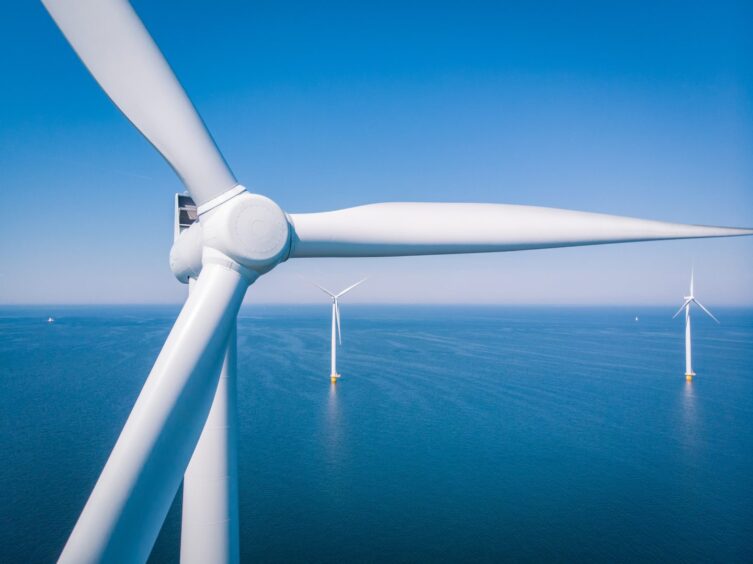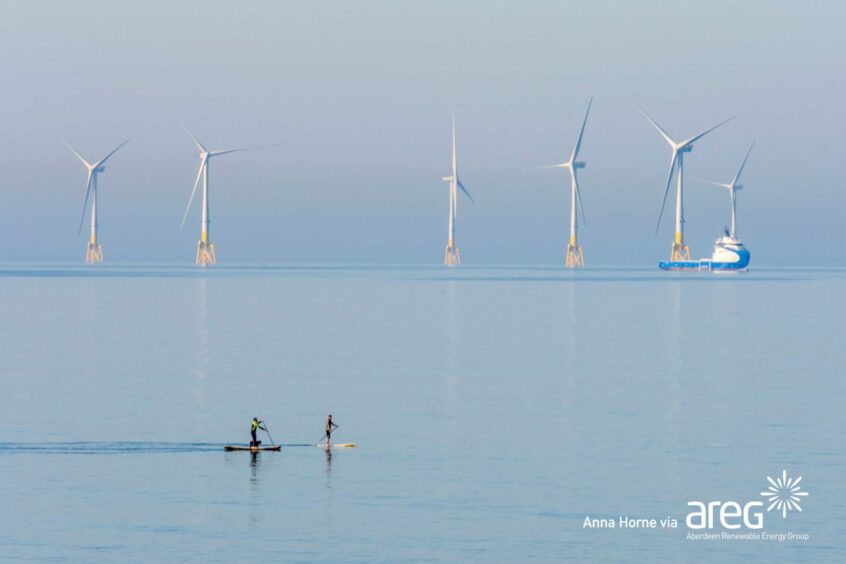
The recently announced budget boost for the upcoming Allocation Round 6 (AR6) renewable auction could bring in over 1GW of extra offshore wind capacity.
An analysis from Offshore Renewable Energy (ORE) Catapult said that the extra £300 million for offshore wind added to the sixth allocation round of the UK’s contracts-for-difference (CfD) funding mechanism could bring in 1.16GW of offshore wind capacity more than originally expected.
ORE Catapult head of analysis and insights Tom Quinn highlighted the funding budget could deliver thousands of megawatts of power across offshore wind and tidal projects.
He said: “If the entire budget is used with projects bidding at the maximum strike price, then we could see 4.2GW of bottom fixed wind, 362MW of floating wind, and 20MW of tidal stream projects securing CfDs.”
The potential increase in production capacity depends on what price renewable energy developers bid for. He explained: “The impact of this announcement will only be fully known when we see what price developers bid at.
“Bidding lower means it takes more capacity to ‘use up’ the budget. In the most likely scenario, this will result in 1.1-1.5GW more offshore wind, 200-250MW more floating wind and around 7MW of tidal stream.”
Analysts at Aurora Energy Research predicted that the “unprecedented support” in the increased budget could boost the volume of offshore wind capacity procured by up to 1.6GW, for a total of 5.8GW, assuming an auction clearing price of £60/MWh.
It should also address the failure of the previous funding round to attract any offshore wind projects at all.
Senior research analyst at Aurora Energy Research Tom Betts said: “This unprecedented support combined with increased administrative strike prices means the auction this year will likely see much more competition than AR5 last year, which failed to attract participation from any offshore wind bidders.”
Meanwhile, he reassured those who were concerned the budget boost would drive up energy prices for consumers.
“Funding for the CfD is recouped through consumer electricity bills, but the impact will not be incremental as additional wind will apply a downward pressure on wholesale prices, all other things being equal,” he said.
Meanwhile, LCP Delta predicted the amount of offshore wind procured in the auction could increase between 5.5-9GW “depending on the clearing prices”.
Funding boost
The UK Government announced that it would ramp up the budget for AR6 by £500m compared to the funds previously set by the Conservative Government, up to £1.5 billion
This includes an extra £300m for Pot 3, which covers offshore wind, taking the overall budget to £1.1b.
The move was met positively by industry figures, saying it was a signal of Labour’s commitment to implementing its climate agenda and the renewables targets.
ScottishPower CEO Keith Anderson said: “The auction needed a reset after last year and we welcome the increased budget, which is an important investment signal to the industry to make Britain a clean energy superpower, secure more low-cost offshore wind and spur economic growth.
“This will unlock billions in private investment, support thousands of jobs, strengthen our energy security and produce the green and affordable power needed for decades to come.”
The previous Conservative government also boosted the strike price available to offshore wind from £44/MWh to £73/MWh, and 52% for floating offshore wind projects, from £116/MWh to £176/MWh.
AR5 failed to attract any bids from offshore wind developers as the price ceiling was seen as being too low to properly finance the projects.
The overall AR6 budget is now seven times higher than last year’s failed AR5 auction, the highest ever amount of funding offered under the Contracts for Difference (CfD) scheme.
Other pots
Established technologies like onshore wind and solar farms, which compete in Pot 1, will receive £185m, an increase of £65m.
Gneiss Energy director of cleantech and renewables Andrew Coull said: “More money for Pot 1 underscores the new government’s commitment to approve large-scale solar and to kick-start onshore wind in England.”
Meanwhile, Pot 2, which covers emerging technologies, including floating offshore wind, geothermal, and tidal energy, will receive £270m, an increase of £165m, with £15m ringfenced for tidal projects, up from £10m.
According to ORE Catapult’s analysis, this could increase Pot 2’s capacity allocation by 234MW, with 227MW coming from floating and the rest from tidal.
Coull said: “The £165m (157%) increase for emerging technologies in Pot 2 arguably provides more signalling about the government’s broader ambitions for renewable energy technologies by providing more support for sunrise sectors including floating offshore wind, wave and tidal, advanced conversion technologies, anaerobic digestion, dedicated biomass with CHP and geothermal.”
Labour’s ambitions
Increasing the budget available in AR6 is aimed at driving Labour’s ambitions to quadruple offshore wind capacity by 2030.
However, despite the funding boost, analysts were still sceptical that Labour would be able to fulfil their campaign promises of doubling onshore wind, tripling solar, and quadrupling offshore wind capacity.
ORE Catapult’s Quinn noted: “There is over 10GW of offshore/floating wind eligible to bid into AR6, so we are likely to see heated competition in the auction. This will be a welcome change from AR5, which attracted no bids for offshore wind.
“The announcements to increase the administrative (maximum) strike price in March 2024, and this increase in budget should result in multiple GWs awarded. However, this still leaves the sector playing catch-up to meet targets.”
In addition, Aurora Energy Research’s Betts said: “Whilst this budget will accelerate the deployment of renewable capacity in the coming years, it is unlikely to fully deliver Labour’s ambitious manifesto pledge to double onshore wind, treble solar and quadruple offshore wind capacity by 2030.”
And LCP Delta’s head of economics, policy and investment, Sam Hollister added: “The UK currently has 14GW of offshore wind on the system, with a further 13GW of CfD procured capacity already in development. If the UK is to reach its 55GW target by 2030, this year’s CfD auction needs to be targeting 9GW as a minimum, with the hope of securing additional allocations in the next two years.
“The hope from government might be that their wide-ranging energy policy measures will encourage additional projects to come forward, increasing liquidity in AR7 and AR8, which could result in further capacity procured but at lower prices.”

 © Supplied by Anna Horne
© Supplied by Anna Horne © Supplied by Gneiss Energy
© Supplied by Gneiss Energy